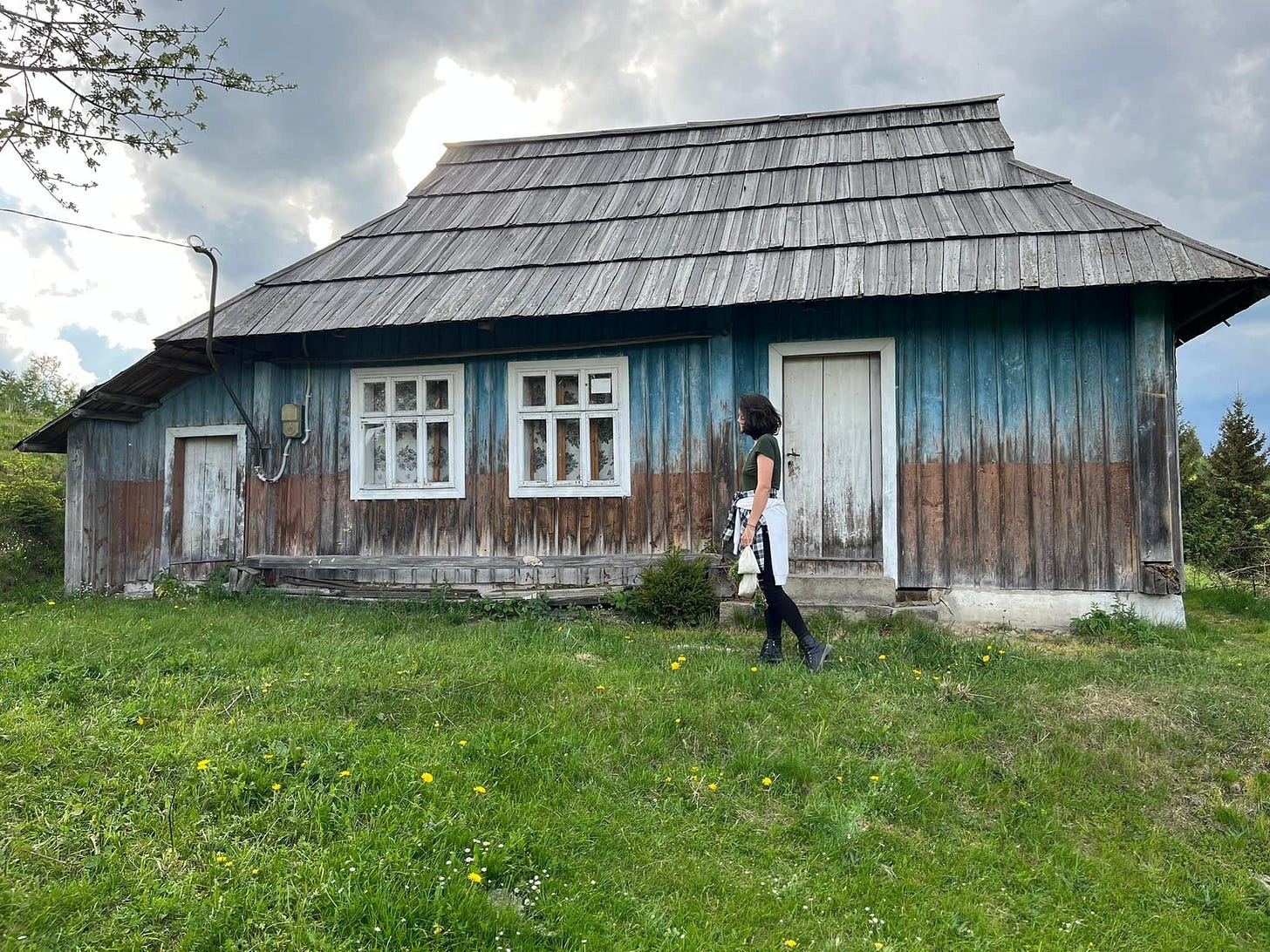A Confabulation of Reports
"Confabulation is a symptom of various memory disorders in which made-up stories fill in gaps"
As COP27 in Egypt nears, it is release time for a cascade of reports, film documentaries, books and pledges of action. Some of the more actively covered or uncovered reports in recent weeks include a stunning Met Office (UK weather center) archived forecast and a reversal of doomsaying from author David Wallace-Wells.
In May 1992, when the Earth Summit saw the formation of the United Nations Framework Convention on Climate Change (UNFCCC), atmospheric CO2 concentration was 359.99 ppm. I remember some of the earliest COP conferences when the target to limit atmospheric concentration for CO2 was 450 ppm. It would be many years later that Bill McKibben and 350.org said no, 450 was far too high. We need to get back below 350. Jawboning numbers did not seem to help. In 2016 we passed 400. We are now around 415. Though that seems a big, scary number, CO2 concentrations could easily pass 500 ppm in a few years, and even reach 2,000 by 2250, unless something changes.
 |
| Giraffes dead from thirst |
Its most recent findings are that even if emissions were cut sharply, the world will see a 50% increase in wildfires and significant sea level rise this century. Assuming the mid-range scenario for emissions cuts, which is deemed most likely, temperatures will be in the region of 3 to 3.5°C by 2100. A business-as-usual scenario would place temperature rise closer to 5 degrees worldwide.
German psychiatrist Karl Bonhoeffer coined the term “confabulation” in 1900. He used it to describe when a person gives false answers or answers that sound fantastical or made up. Confabulation is a symptom of various memory disorders in which made-up stories fill in gaps.
As Yogi Berra said, “It's tough to make predictions, especially about the future.” The Met Office and Wallace-Wells are not to be faulted for trying to get it right. Readjusting your forecasts year-by-year based on the latest data is laudable. What I find puzzling is the persistent failure to account for the exponential function.
To recap, anything with a consistent growth rate has a predictable doubling time. Every time a doubling occurs, the amount produced in that doubling is equal to all of that thing produced in history before the doubling. Two of a thing becomes four of a thing. Eight thousand of a thing becomes 16,000.
 |
| Ten Doublings |
The Met Office prediction, and the majority of recent studies cited by Wallace-Wells, follow a linear, rather than exponential, progression of temperature increases out to the end of the century. So, for instance, if we observed a gain of 2/10 of one percent in parts per million of atmospheric CO2 and consequent temperature increase of 0.2 °C during the first two decades of the 21st century, we are inclined to say that means 0.1 °C per decade or one degree in ten decades. If the doubling rate in the 20th century went from 0.05 to 0.1 then a linear model would apply that to the 21st century and predict it will grow to 0.2 per decade this century. Following this straightforward arithmetic, one reaches another 1.6-degree increase this century which, when added to 1.4 degrees already tallied in the Industrial Era, takes us up 3 degrees by 2100.
Looking forward another century or more, worst-case scenarios project temperatures by the 22nd century that last prevailed in the Early Eocene, reversing 50 million years of cooler climates in the space of two centuries.
An August 2022 PNAS study, Climate Endgame: Exploring catastrophic climate change scenarios said:
This is particularly alarming, as human societies are locally adapted to a specific climatic niche. The rise of large-scale, urbanized agrarian societies began with the shift to the stable climate of the Holocene ∼12,000 y ago. Since then, human population density peaked within a narrow climatic envelope with a mean annual average temperature of ∼13 °C. Even today, the most economically productive centers of human activity are concentrated in those areas. The cumulative impacts of warming may overwhelm societal adaptive capacity.
Second, climate change could directly trigger other catastrophic risks, such as international conflict, or exacerbate infectious disease spread, and spillover risk. These could be potent extreme threat multipliers.
Third, climate change could exacerbate vulnerabilities and cause multiple, indirect stresses (such as economic damage, loss of land, and water and food insecurity) that coalesce into system-wide synchronous failures. This is the path of systemic risk. Global crises tend to occur through such reinforcing “synchronous failures” that spread across countries and systems, as with the 2007–2008 global financial crisis. It is plausible that a sudden shift in climate could trigger systems failures that unravel societies across the globe.
Kurt Burkhart, Managing Director at One Earth, adds that to get to some of the nuances of these studies, you have to sift out some b.s.. An important study by BloombergNEF estimated that we need a 1:4 ratio of fossil fuel to renewable investments in order to reach the Paris Agreement goal of cutting emissions in half within a decade. Their headline: We need to quadruple funding for clean energy! Not true: We have to double renewable investments while halving fossil investments. It should not be that difficult. It is currently less expensive to close a coal-burning facility and replace it with newly-installed renewable energy than to keep operating in the old way. Because of that, renewable investment surged to $755 billion last year while fossil funding leveled off at $838 billion. Trying to explain why $838 billion is being spent on fossil investment in 2022 is like trying to explain how Donald Trump became President of the US.
Climate scientist Kevin Anderson, whom I admire, sometimes gets it wrong, as when he opined, “Plant trees for tree reasons, not for climate.” A recent study in Nature examining net emissions from the Amazon disproved that. In 1984, the Amazon net sequestered some 2 trillion tons of carbon dioxide annually (2 GtCO2e/y). By the early 2000s, forest cover had halved and biological resilience was being lost. It disappeared fastest in parts of the rainforest that were closest to human activity and for decades the Amazon fragmented into smaller and smaller patches. Eventually, this augured a cycle of lower rainfall that multiplied the loss. Politics and heat combined to spread fires that destroyed even those areas far from human settlement.
By 2010 the Amazon still represented a quarter of all forest CO2 drawdown on the planet but that global total was also shrinking. By 2020 global net forest drawdown had shrunk to 2.4 trillion tons and the Amazon accounted for less than half — just 1 GtCO2e/y. The dieback has had profound implications for biodiversity, zoonotic diseases and climate change at a global scale. The Nature article predicts the Amazon may shift from sink to source of carbon dioxide within just a few years, about the same time that global temperature increases exceed 1.5°C. If we followed the IPCC’s medium-emissions trajectory (SSP2) we have a likelihood of reaching 1.5°C of warming by 2030.
Anyone who says tree planting will have no effect on climate change hasn’t been looking at what has been happening. Only a few decades ago the Amazon sequestered as much CO2 annually as the entire planet’s remaining forests sequester today. In 2000 it sequestered double what it does today. Go back a few thousand years and there were six trillion trees on Earth. Today there are fewer than one trillion. Those that remain are on an exponential curve of disappearance.
One Earth’s Burkhart says, “We have the solutions now to limit global temperature rise to 1.5°C, and we’re about to reach a major inflection point. It is going to feel very, very hard over the next couple of years.”
I don’t know that I can agree with him about avoiding 1.5°C, but maybe. I can’t exclude that possibility, even if it seems highly unlikely. Goals are good. They give us something to aim for. Like 350 ppm, even if it’s in the rear-view mirror now.
What would 5 degrees look like? Could it come as soon as 2040 or 2050? When you play with exponents, you are juggling high explosives. The recent Climate Endgame report from PNAS warned we have not been studying the worst-case scenarios.
There is ample evidence that climate change could become catastrophic. We could enter such “endgames” at even modest levels of warming.… Facing a future of accelerating climate change while blind to worst-case scenarios is naive risk management at best and fatally foolish at worst.
Meanwhile, let’s end this war. Towns, villages and cities in Ukraine are being bombed every day. Ecovillages and permaculture farms have organized something like an underground railroad to shelter families fleeing the cities, either on a long-term basis or temporarily, as people wait for the best moments to cross the border to a safer place, or to return to their homes if that becomes possible. So far there are 62 sites in Ukraine and 265 around the region. They are calling their project “The Green Road.”
The Green Road is helping these places grow their own food, and raising money to acquire farm machinery and seed, and to erect greenhouses. The opportunity, however, is larger than that. The majority of the migrants are children. This will be the first experience in ecovillage living for most. They will directly experience its wonders, skills, and safety. They may never want to go back. Those that do will carry the seeds within them of the better world they glimpsed through the eyes of a child.
Those wishing to make a tax-deductible gift can do so through Global Village Institute by going to http://PayPal.me/greenroad2022 or by directing donations to greenroad@thefarm.org.
There is more info on the Global Village Institute website at https://www.gvix.org/greenroad
The COVID-19 pandemic has destroyed lives, livelihoods, and economies. But it has not slowed down climate change, which presents an existential threat to all life, humans included. The warnings could not be stronger: temperatures and fires are breaking records, greenhouse gas levels keep climbing, sea level is rising, and natural disasters are upsizing.
As the world confronts the pandemic and emerges into recovery, there is growing recognition that the recovery must be a pathway to a new carbon economy, one that goes beyond zero emissions and runs the industrial carbon cycle backward — taking CO2 from the atmosphere and ocean, turning it into coal and oil, and burying it in the ground. The triple bottom line of this new economy is antifragility, regeneration, and resilience.Help me get my blog posted every week. All Patreon donations and Blogger or Substack subscriptions are needed and welcomed. You are how we make this happen. Your contributions are being made to Global Village Institute, a tax-deductible 501(c)(3) charity. PowerUp! donors on Patreon get an autographed book off each first press run. Please help if you can.






Comments